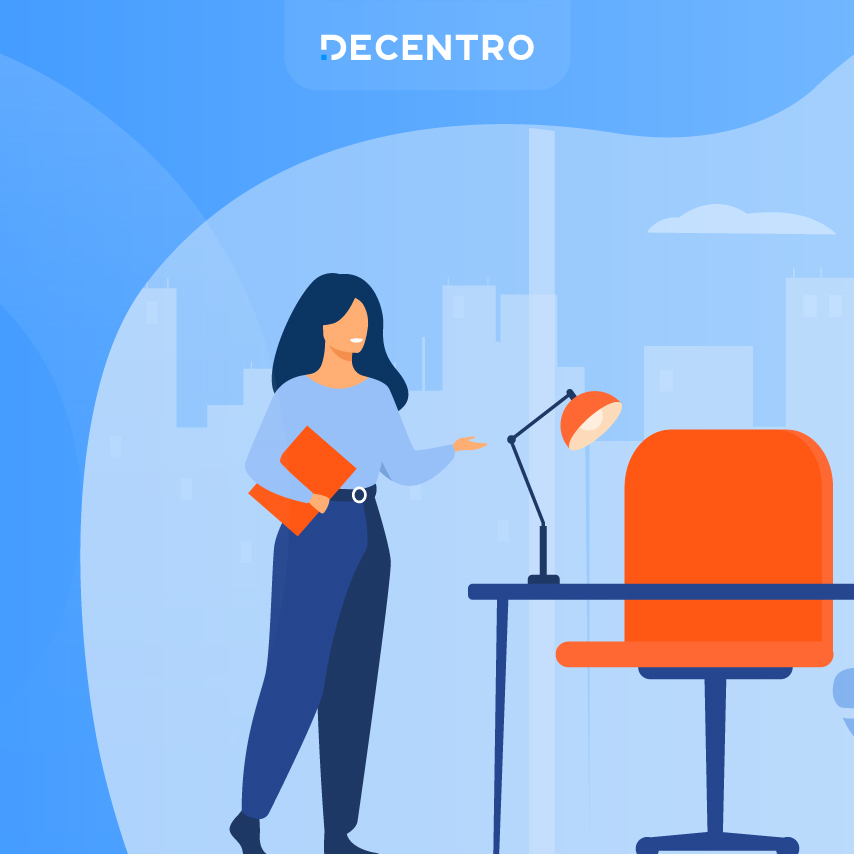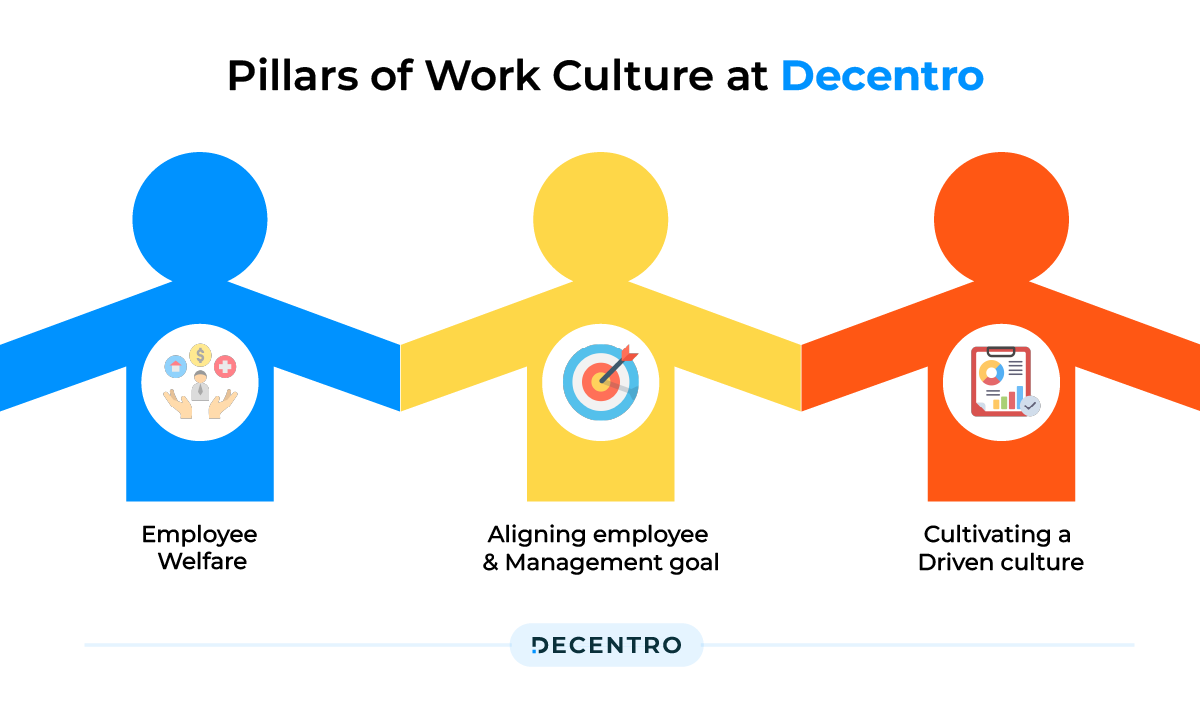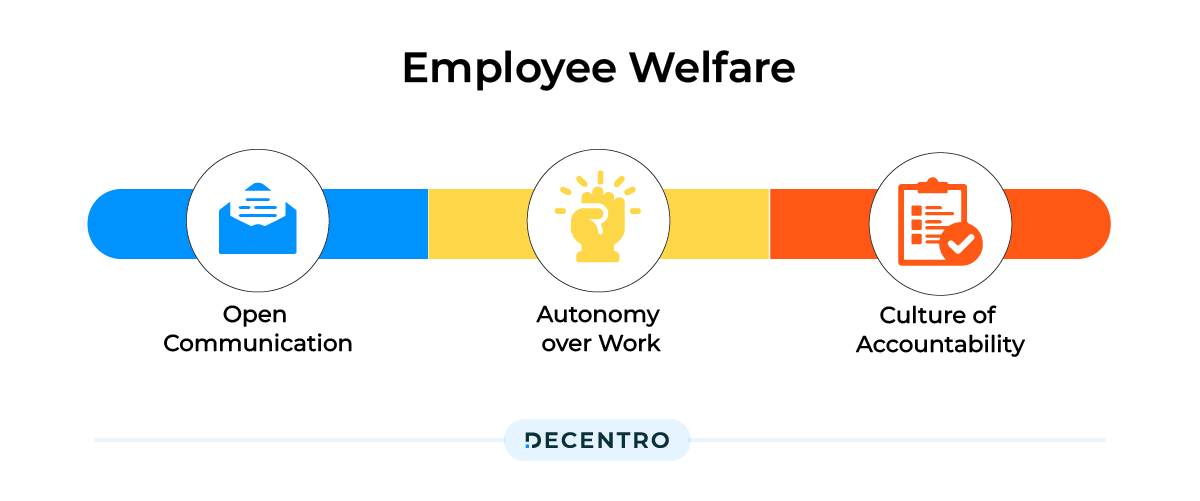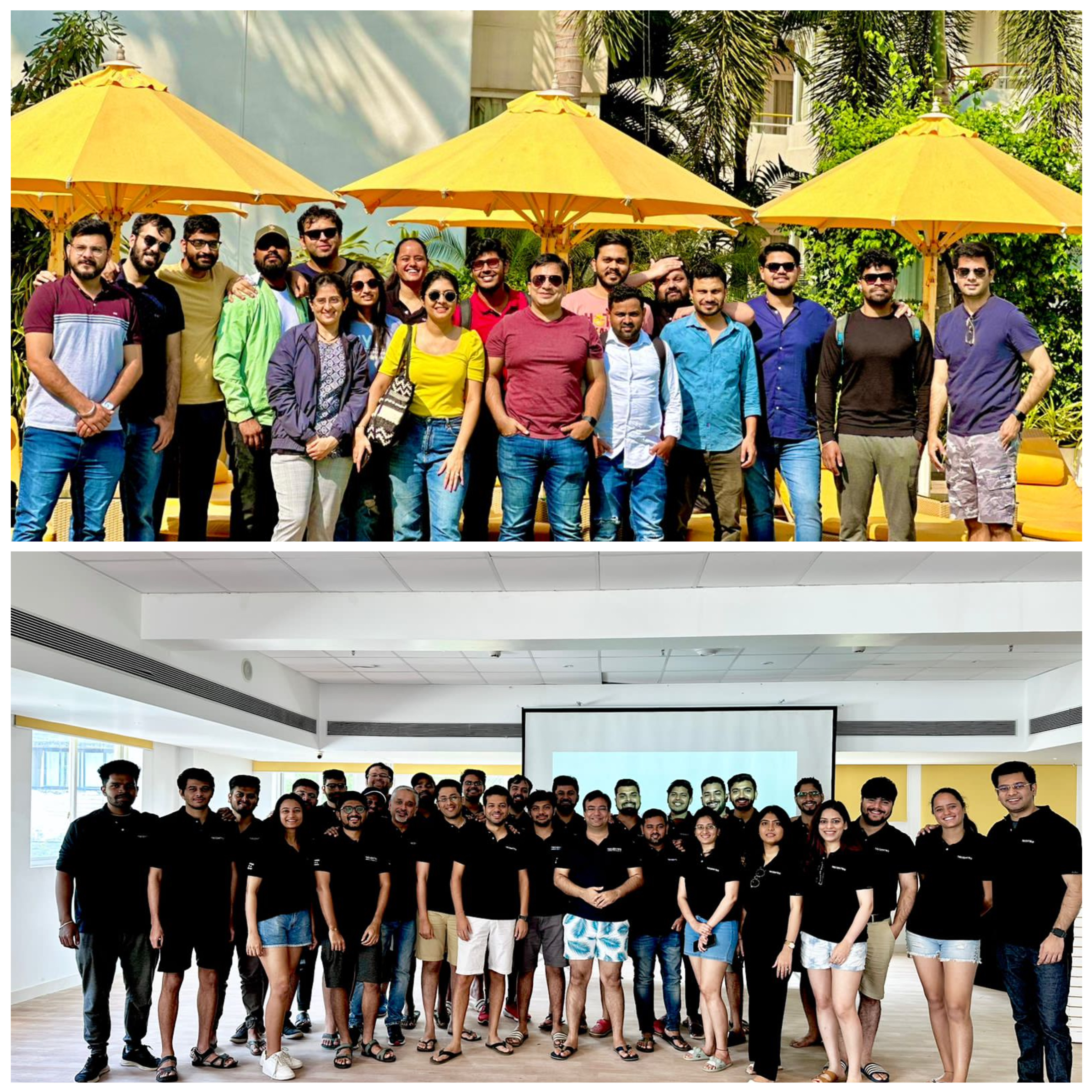Discover how Decentro transformed its HR structure, emphasizing people-oriented strategies. Explore our iterative model, employee welfare, and driven culture.

Re-inventing HR: Building a People-Oriented Organisation at Decentro
Table of Contents

A company comprises its people, so the force behind building that core team must be brought to the forefront. Since the pandemic hit the world, there has been a paradigm shift in where and when we work and how we measure progress. The years 2020 and 2021 have changed the game’s rules forever. Organizations need help transitioning from conventional organizational structures to flexible working models.
While the business models quickly jumped onto the bandwagon of re-inventing themselves during the pandemic, for the human resource department, it was all about renewing the emphasis on the people part of HR’s job. Finding the new normal while balancing the fine line of performance, productivity, and efficiency of the workforce while trying to gauge the challenges the employees face, inside and outside of work, became the goal, which had no set roadmap.
The solution was obvious.
As an organization, you transition to the new normal, one step at a time. Phase out the old system and replace it with a new one.

However, the story of Decentro was a little different.
Now, hear us out.
Transitioning to a model can be difficult, but setting up that model from the ground up is a mammoth task.
In the context of Decentro, a pandemic-incepted organization, the building blocks of the organization had to lay on a blueprint that needed to be revised.
What could have been a roadblock presented itself as an opportunity for the People and Culture Department of Decentro to work closely with the founding team and lay an iterative model in place.
So let’s break it down.
Decentro’s Iterative Model
What is an iterative model in an organization like Decentro?
The idea of the iterative model stems from the need to create opportunities for constant evaluation and improvement in implementing work culture.
It is similar to the PDCA cycle used in agile software development but tweaked to the requirements of the people and culture department.

P (Plan) – Plan precisely the organization’s tone from the get-go. While it takes a little while to find your tone, management teams often have a template of the culture they wish to set.
D (Design) – This is the collaborative piece of the culture setup. While the management has an idea of what they want, the People and Culture department designs the roadmap for achieving it. The hiring-to-retention journey is mapped during this time.
C (Check) – You have the first draft of your ideal work culture, which needs testing. The iterative model is all about being open to changes because nothing put here is set in stone. If it works, you revisit it after a year to check its relevance.
If it doesn’t work, you rework the entire framework.
A (Adjust) – This brings us to the final part, Adjust. Iteration evaluation means comprehensively reviewing the work of the iteration. As mentioned above.
If the system you have put in place works, you need to revisit it after a certain period to check its relevance.
If it doesn’t work, you rework the entire framework.
So, what has the PDCA model helped us achieve at Decentro?
Being a firm believer that HR is a crucial strategic function in any organization has allowed the department to re-imagine traditional processes for Decentro and replace them with effective methodologies.

With an ethos of problem-solving and decision-making forming the foundation, the pillars of the work culture at Decentro were set up—Employee Welfare, Aligning Management and Employee goals, and Cultivating a Driven Culture.
Employee Welfare
As cliche as it sounds, the first pillar of our organization rests on devising methods to build an engaging and enriching environment for the employees. While hiring the right talent is essential, very soon into the game, we realized the retention of the same would make our culture stand out a lot more.

Naturally, managing a remote workforce, establishing new processes and ensuring their smooth integration into the organization, maintaining employee morale and productivity, and addressing mental health concerns came to the forefront of the company’s functioning.
Right from encouraging Open Communication, where the employees can route their feedback via the People and Culture department or directly reach out to the concerned personnel. Rather than isolating a specific channel, the floor is open to constructive feedback.
Time and again, we have empowered employees by giving them Autonomy over their Work and trusting them to make decisions. The Culture of Accountability sits at the heart of our functioning and has been the core reason behind our innovation and breakthroughs regarding the solutions delivered.
There was a conscious effort to break away from the traditional one-size-fits-all training for their employees, and the personalized approach has allowed us to build a loyal employee base in the past three years.
Aligning Management and Employee Goals
In a 2020 study, only 22% of leaders said they know what drives employee disengagement at their companies.
However, with Decentro, we have consciously urged our management team to keep a pulse on the workings of our employees. This is an opportunity to create two-way communications to uncover what’s working and what’s not, which loosely translates founding team having access to every employee.
Rather than setting a culture where the door is always open for the employees to walk in, we have tried to inculcate accessibility from a Founder’s Point of View, as well.

Periodic interactions, town halls, and city catchups are a few of our formal yet informal ways of being aware of our employees’ well-being. The lack of barriers plays in our favor, and most of the time, our founders are the ones who are in tune enough to point out a specific change in a policy if needed, which the employees generally prompt.
Right from the beginning, the department works closely with each lateral to align HR initiatives with their business goals. Hiring the right talent and reassigning the talent available within the organization are all a by-product of active and empathetic listening, bolstering trust and mutual commitment between employees and the organization.

Having the maximum pulse on the most significant asset within the organization, the employees, the HR Team of Decentro has been instrumental in chalking out strategies and models to maintain and engage the employee pool, such as
- Health Insurance and Wellness Programs
- Flexible Work Arrangements
- Customized training and individual improvement plan
Cultivating a Driven Culture
At Decentro, there is a conscious effort to set a culture where every idea sits on the table. This tone is set within the organization through dedicated time for departments in town halls and cross-functional activities periodically.

Having visibility into how each department works allows a free flow of ideas. A dedicated showcase day allows everyone to get on the same page and know exactly where the resources are getting used. The occasional cross-functional twist adds a little fun and perspective to the activity.
We strongly believe that employees are more than their departments in an organization as tight-knit as Decentro. If an employee understands why the organization exists and how their role is crucial to its sustenance, the human comes to the forefront. The idea is to add the Human to the Resources being brought into our organization, and that is through the idea of cultivating purpose. One of our core focuses in the same sphere has been promoting work-life balance by encouraging employees to prioritize their well-being and personal lives. Right from providing flexible work arrangements such as remote work options, and flexible hours, we have been cognisant of the needs of our employees beyond work.
So, What’s Next?
The pandemic and its aftermath have brought forth the value of voice-of-employee strategies and how they drive engagement. Enabling communities, empowering transparency, and endorsing performance are the surest ways for HR professionals to set the tone within the organization.
With 2022 reinventing the HR industry by solidifying its new rules and regulations, 2023 will be about pushing boundaries to maximize value.

Speaking strictly for Decentro, it translates to stitching together an already deployed end-to-end digital strategy for
- Onboarding
- Performance Management
- Engagement
- Development and Training.
There is also a conscious effort to adopt Data-Driven Decision Making at the filtering level to make more informed choices, enhance efficiency, and drive positive outcomes for employees and the organization.
In conclusion, Decentro will always advocate that future businesses understand that revenue increases are rooted in whole-person well-being.
And that puts employee care at the front and center of your operations. Food for thought, isn’t it?
PS: We’ve put on our hiring caps yet again. This time for some uber-cool positions. If you think you’d be an excellent fit for the role or know someone in your network, send them our way! We’d love to explore a possible career path together!


